Here’s an art itinerary from a recent Klimt day… I spy with my explorer eye…
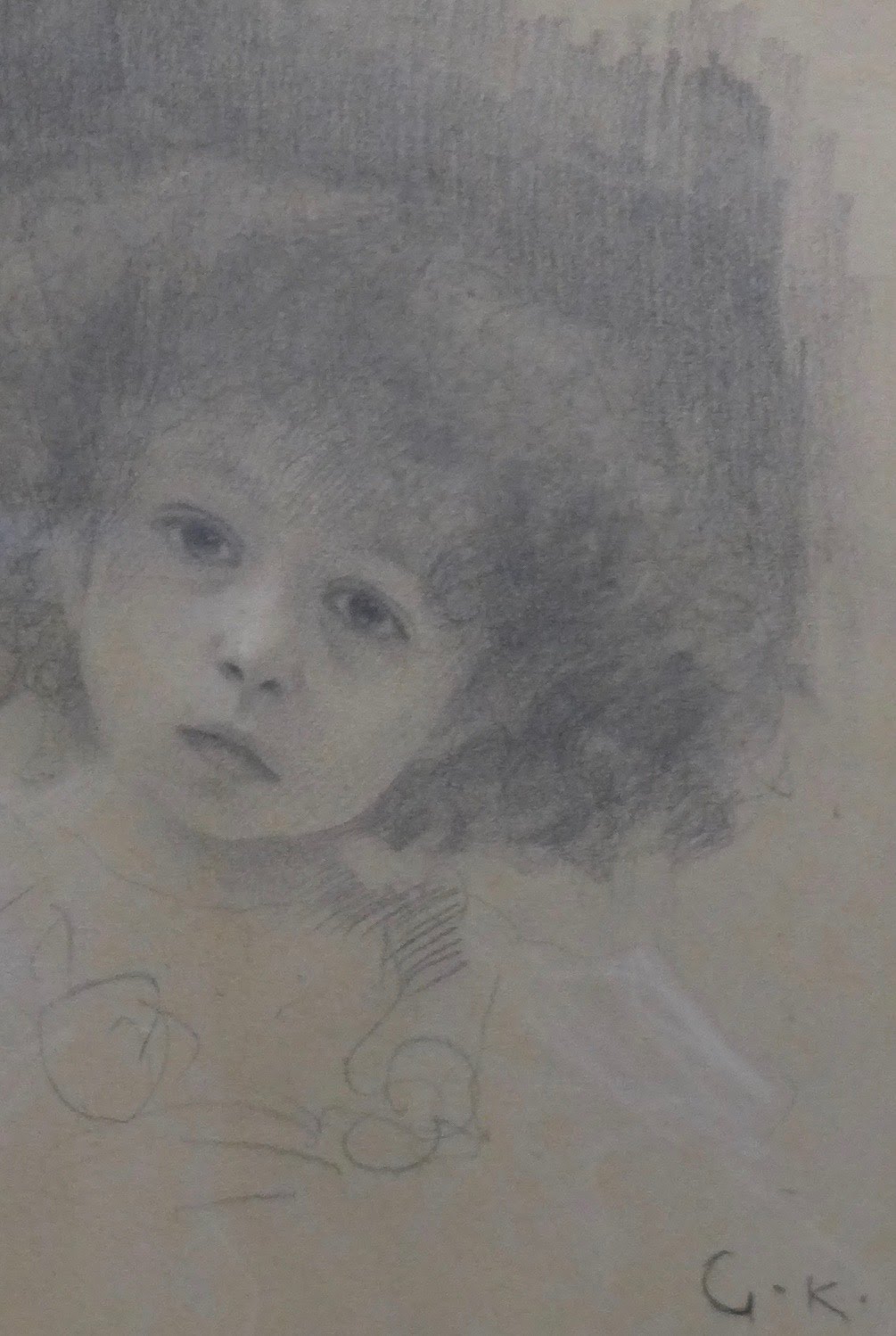

…a gilded detail on a card from… August 5, 1895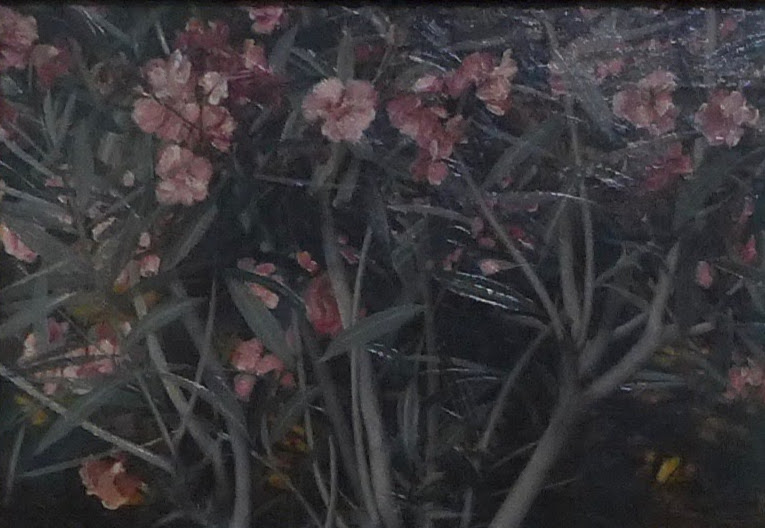 …two girls, standing close together, focused on the flowers of an oleander bush.
…two girls, standing close together, focused on the flowers of an oleander bush.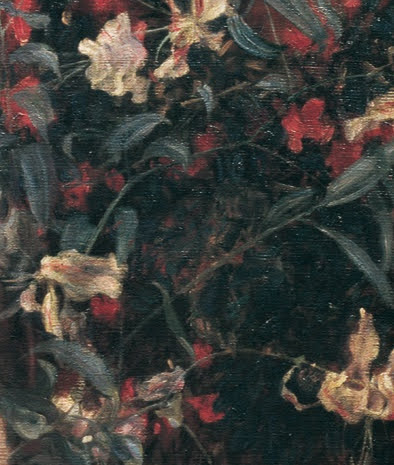 ...the first in a new style for the artist and a key work in the Viennese art at the turn of the twentieth century.
...the first in a new style for the artist and a key work in the Viennese art at the turn of the twentieth century. …a pattern detail from the photo copy of a highly controversial painting destroyed in 1945.
…a pattern detail from the photo copy of a highly controversial painting destroyed in 1945.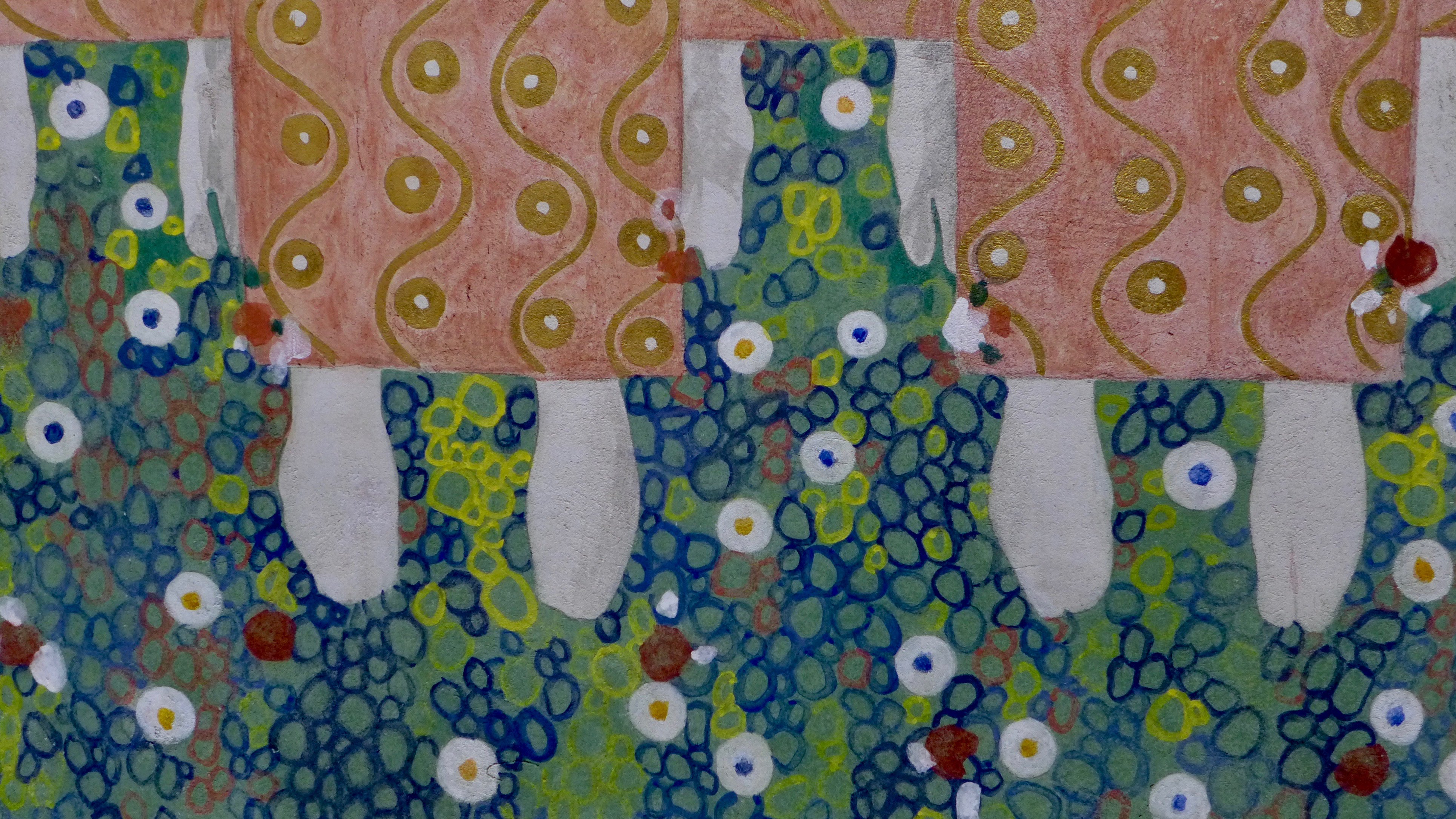
The catalogue for this Beethoven exhibition described these figures as “the choir of the angels from Paradise.”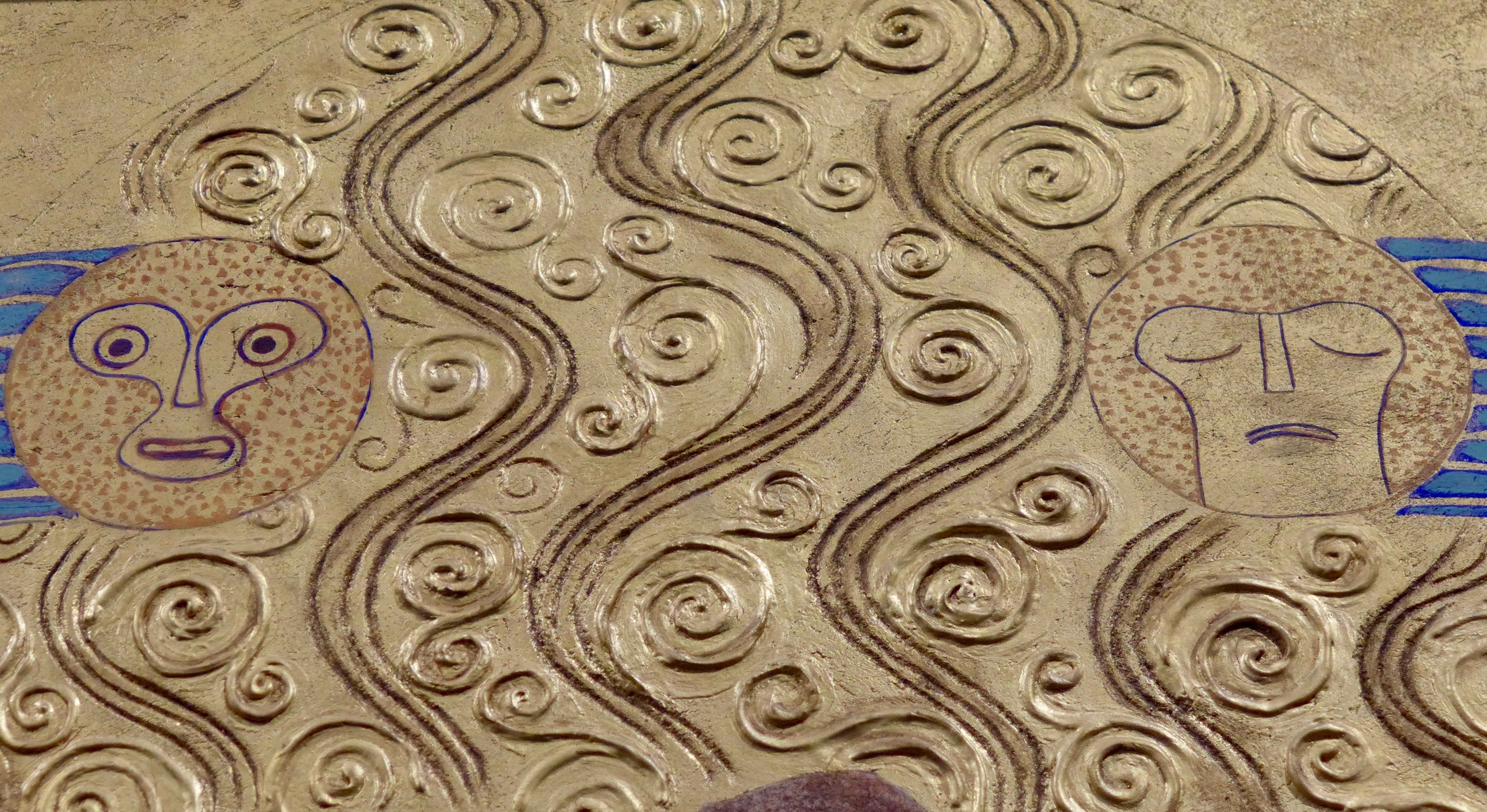
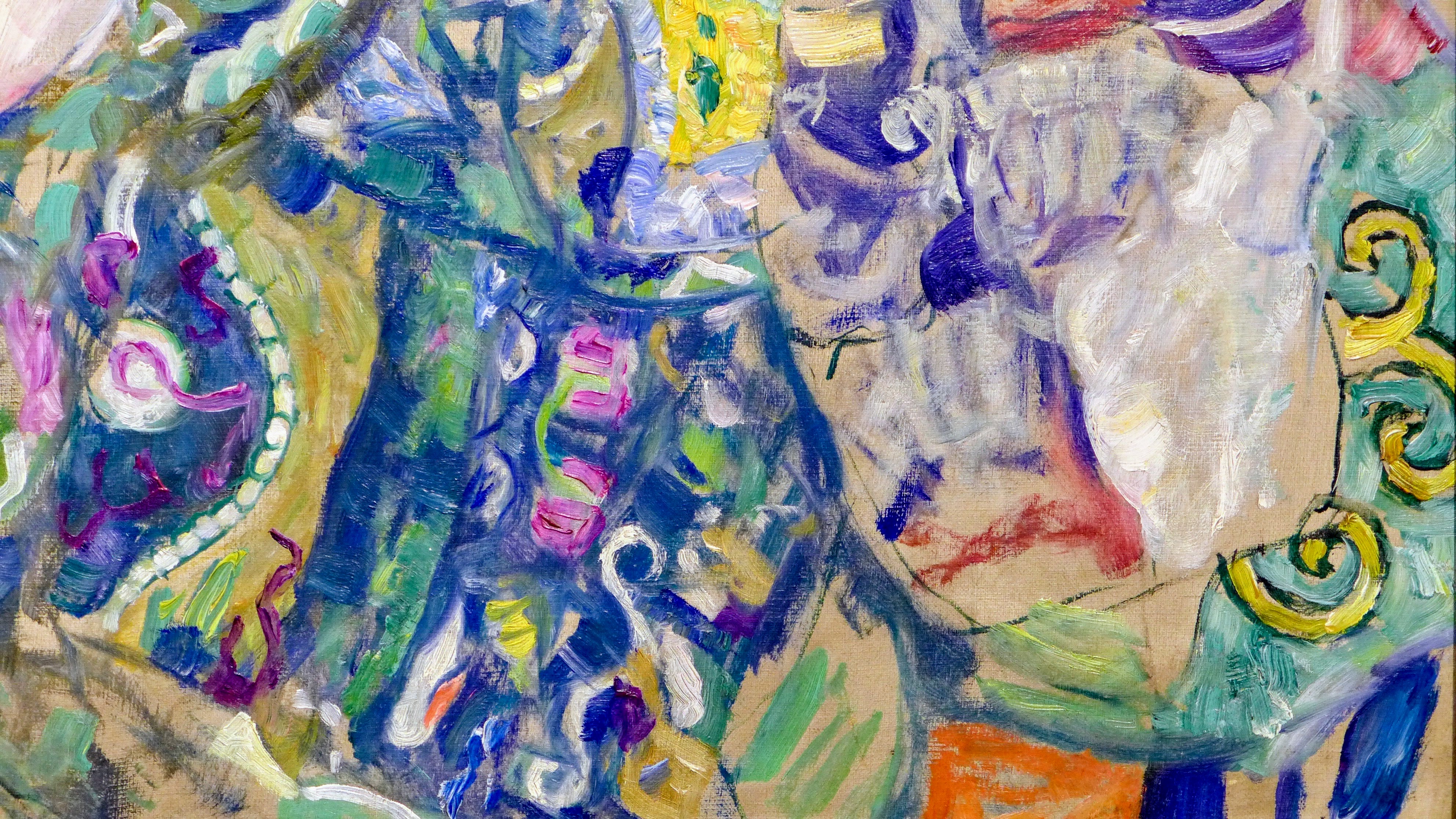 …a vast heap of brightly colored fabrics.
…a vast heap of brightly colored fabrics.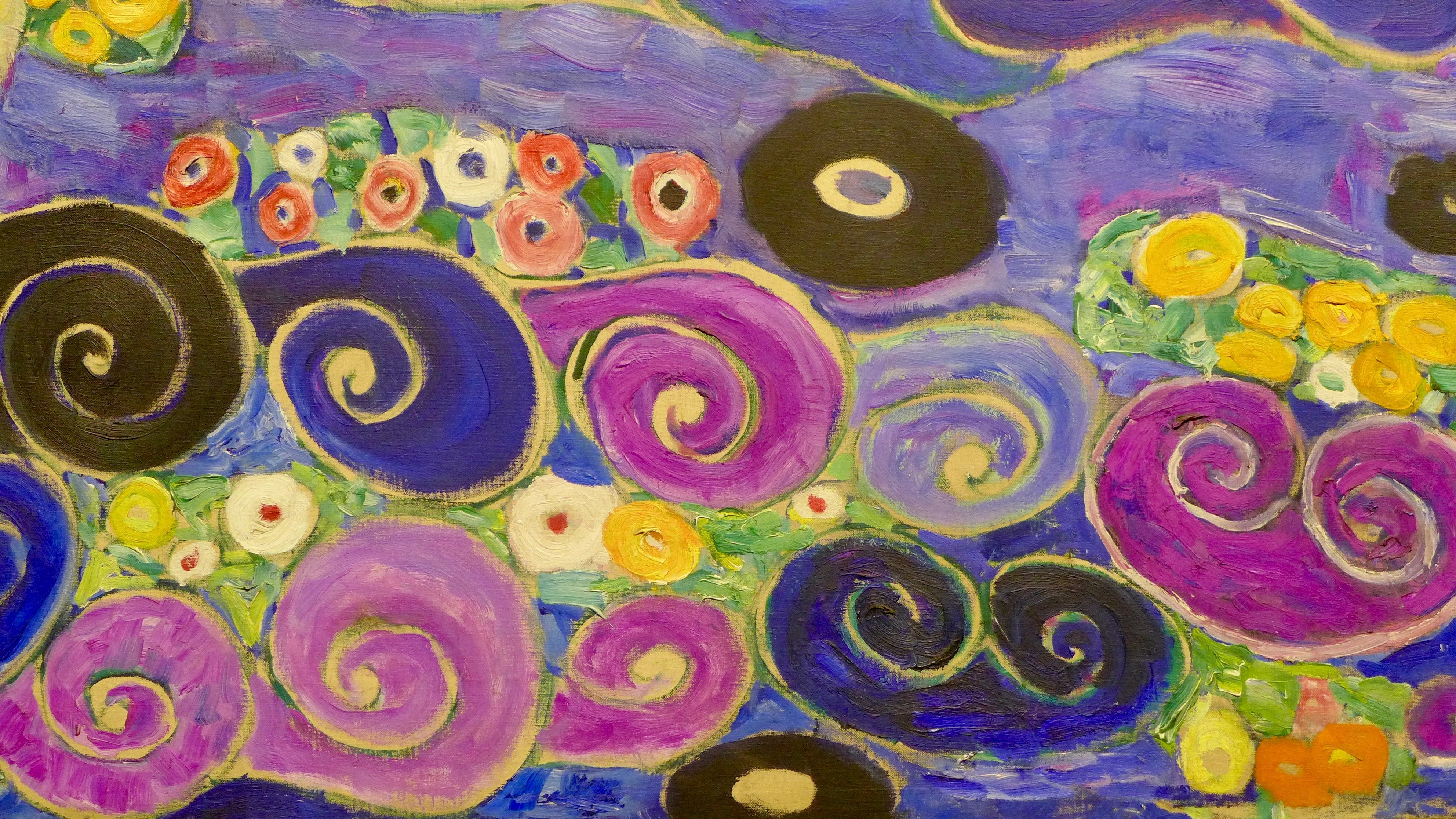 …the dazzingly bright ornamental swirl
…the dazzingly bright ornamental swirl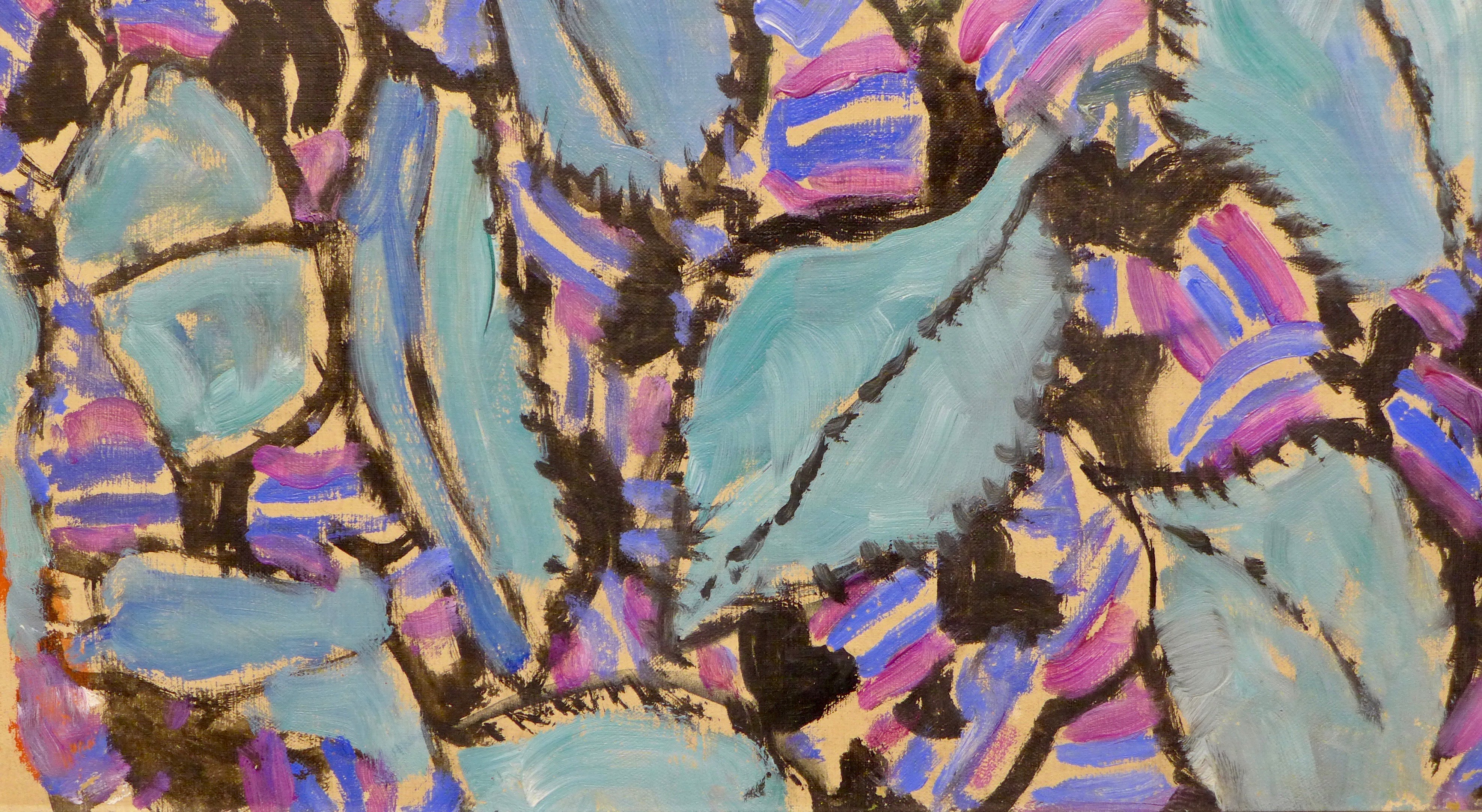 … a fabric design by Martha Alber for the Wiener Werkstätte
… a fabric design by Martha Alber for the Wiener Werkstätte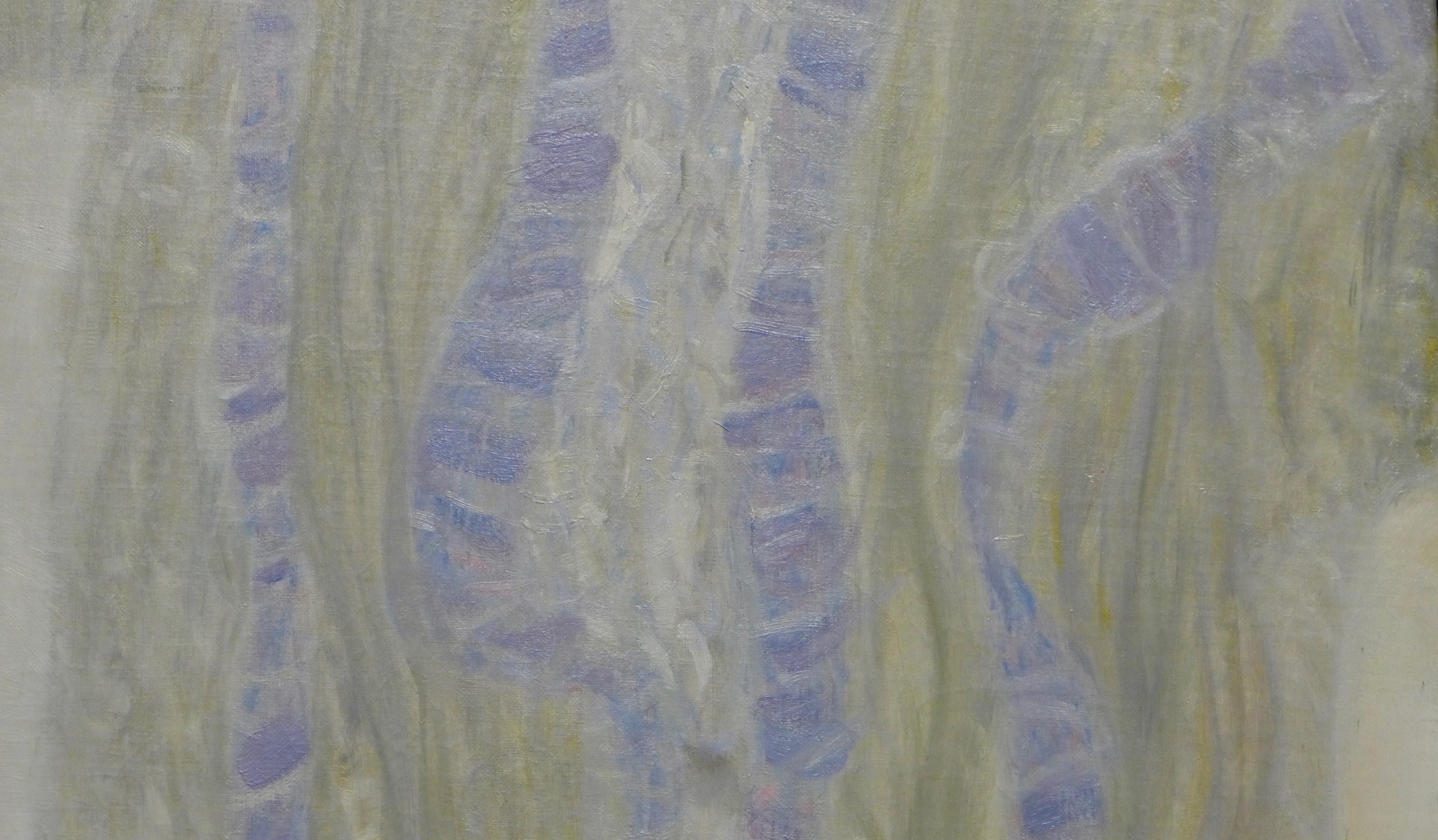 … a woman dressed in white
… a woman dressed in white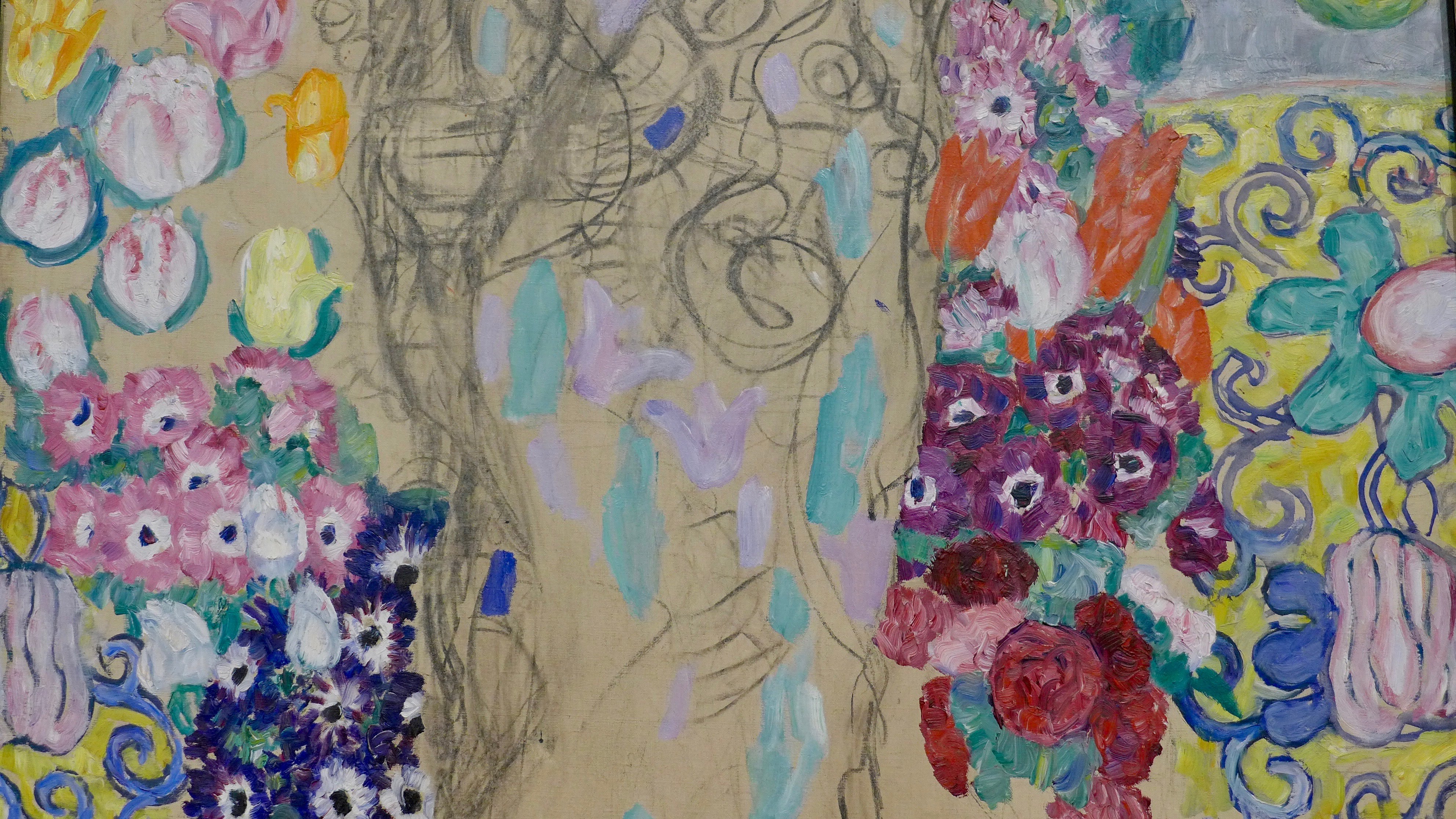 …Klimt’s third effort to finish this portrait
…Klimt’s third effort to finish this portrait … a farmhouse eneveloped in the natural forms
… a farmhouse eneveloped in the natural forms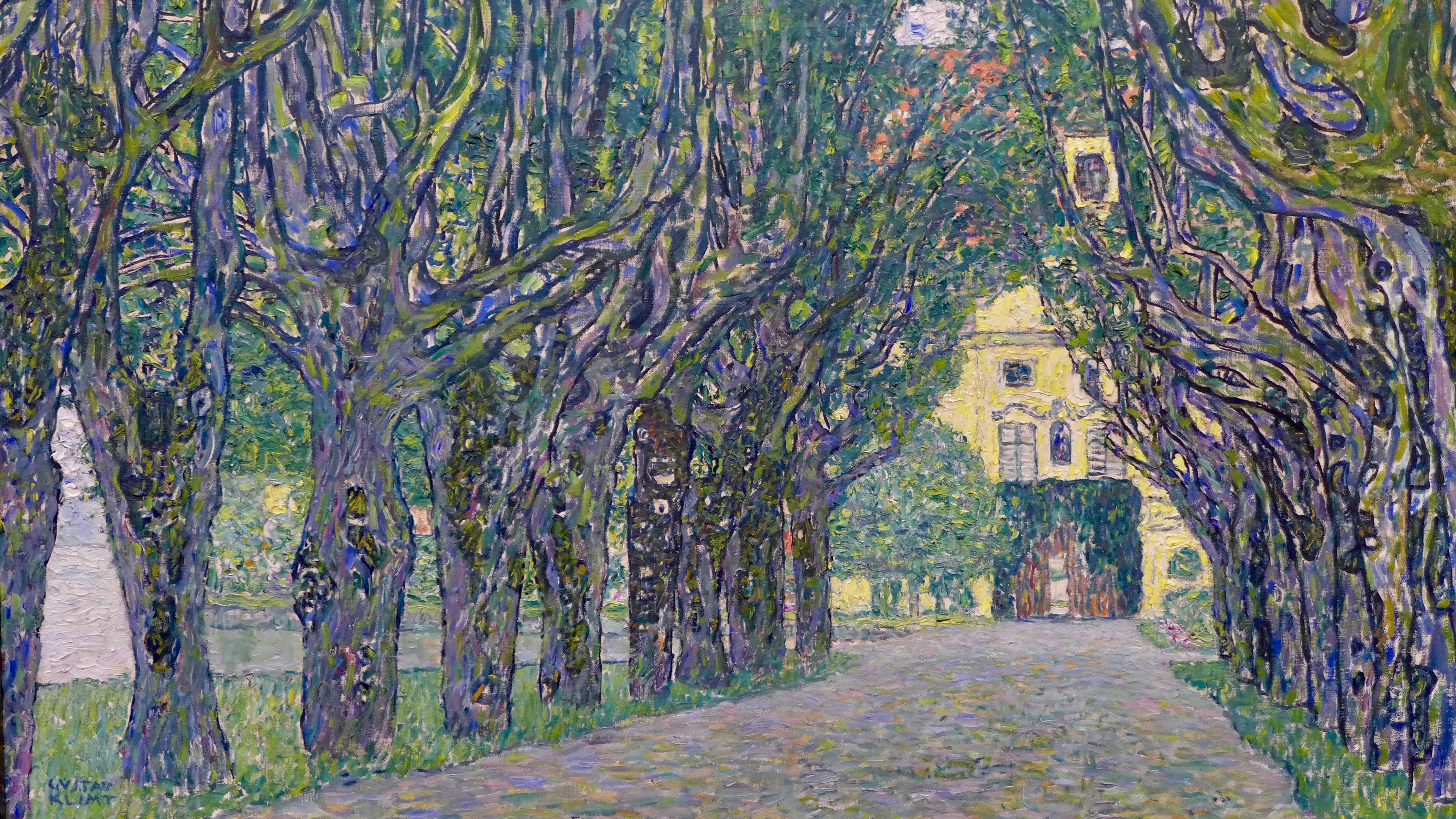 … a castle on its own island in the Attersee
… a castle on its own island in the Attersee … a broad band of flowers, including oleander
… a broad band of flowers, including oleander
…a bust of child from 1895
Directly behind them are elements of a monumental architectural structure in marble, its horizontal and vertical lines reiterating those of the picture frame.
Novel for Klimt were the life-size rendering of the sitter and the square shape of the portrait, which exudes a calming sense of balance. Klimt suggested that the image is of a deftly captured fleeting moment – a “snapshot.”
In 1893 Austria’s ministry of culture commissioned the artists Gustav Klimt and Franz Matsch to decorate the Great Hall of the University of Vienna. The Habsburg empire had entered its final phase, and Vienna, one of Europe’s flourishing cultural and scientific centres, was under liberal rule and experiencing a period of industrial expansion and new ideas that was to become known as the Ringstrasse era. Ringstrasse, an imposing avenue, encircled the old centre of Vienna, and grand buildings were erected along it.
“This Kiss for the Entire World.”
The picture’s true subject thus become the colorful decorative coverlet, out of which Klimt has created a fantastic ornamental pyramid.
one of Klimt’s most significant figural composition of his later years.
She died in 1964 in Santa Clara County, California
Klimt has followed the laws of perspective in depicting flowers ever smaller as they recede.
PAINTINGS
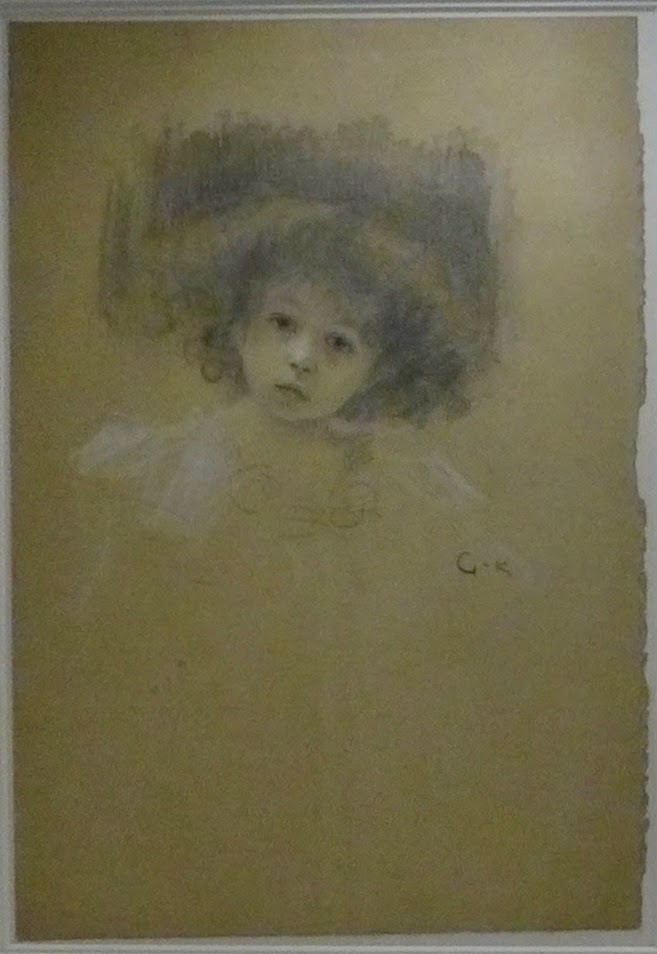
Bust of child (study for the painting Love), 1895
Card with best wished on the occasion of the wedding of Eugenia Bertolini and Julius Rhomberg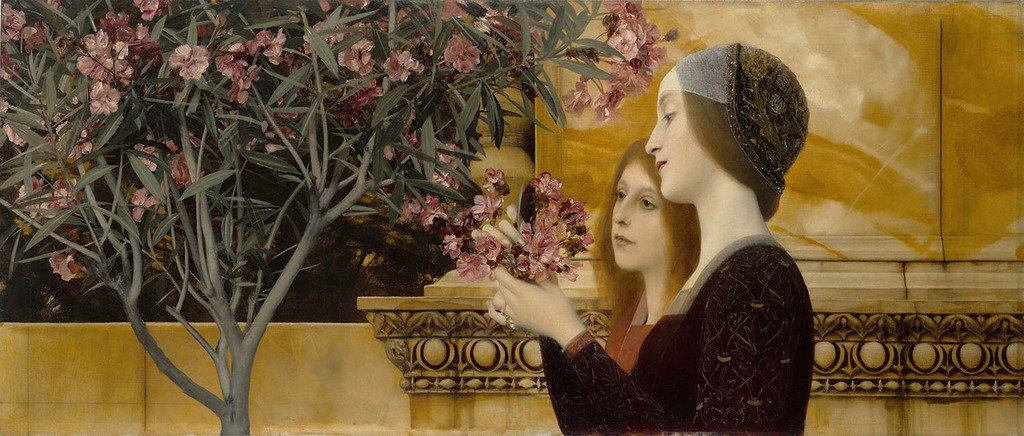 Two Girls with an Oleander Bush, ca. 1890/1892
Two Girls with an Oleander Bush, ca. 1890/1892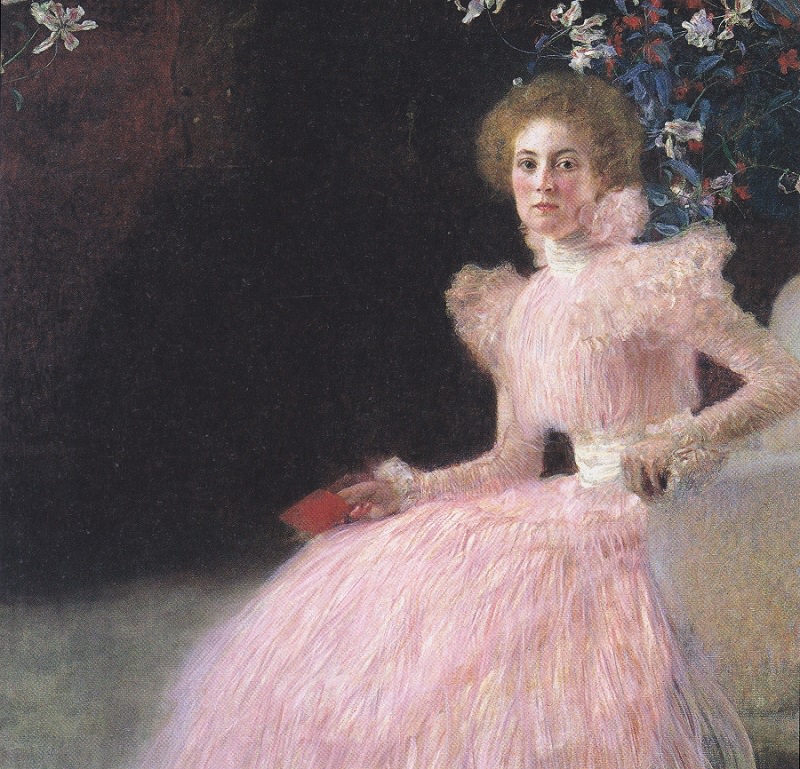 Portrait of Sonja Knips, 1898
Portrait of Sonja Knips, 1898
Belvedere, Vienna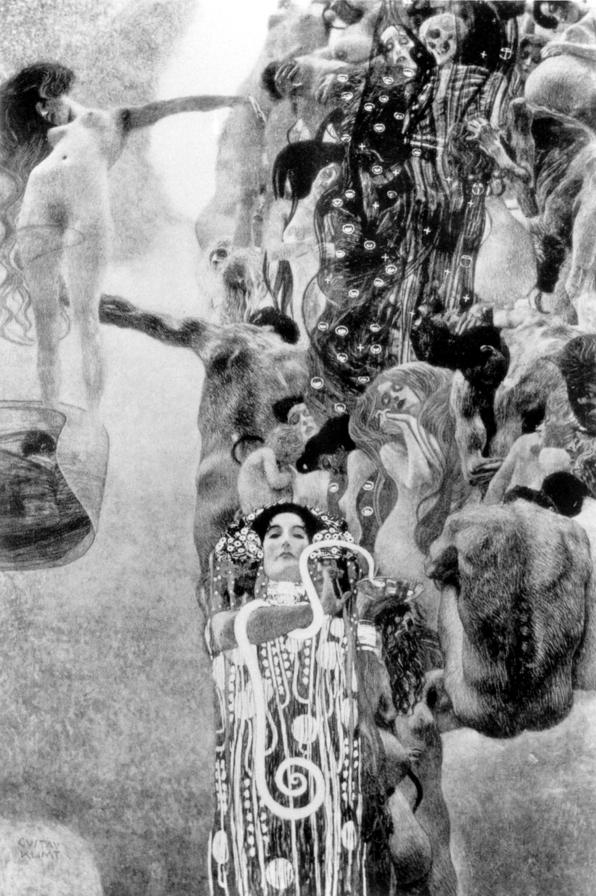 Medicine (1901)
Medicine (1901)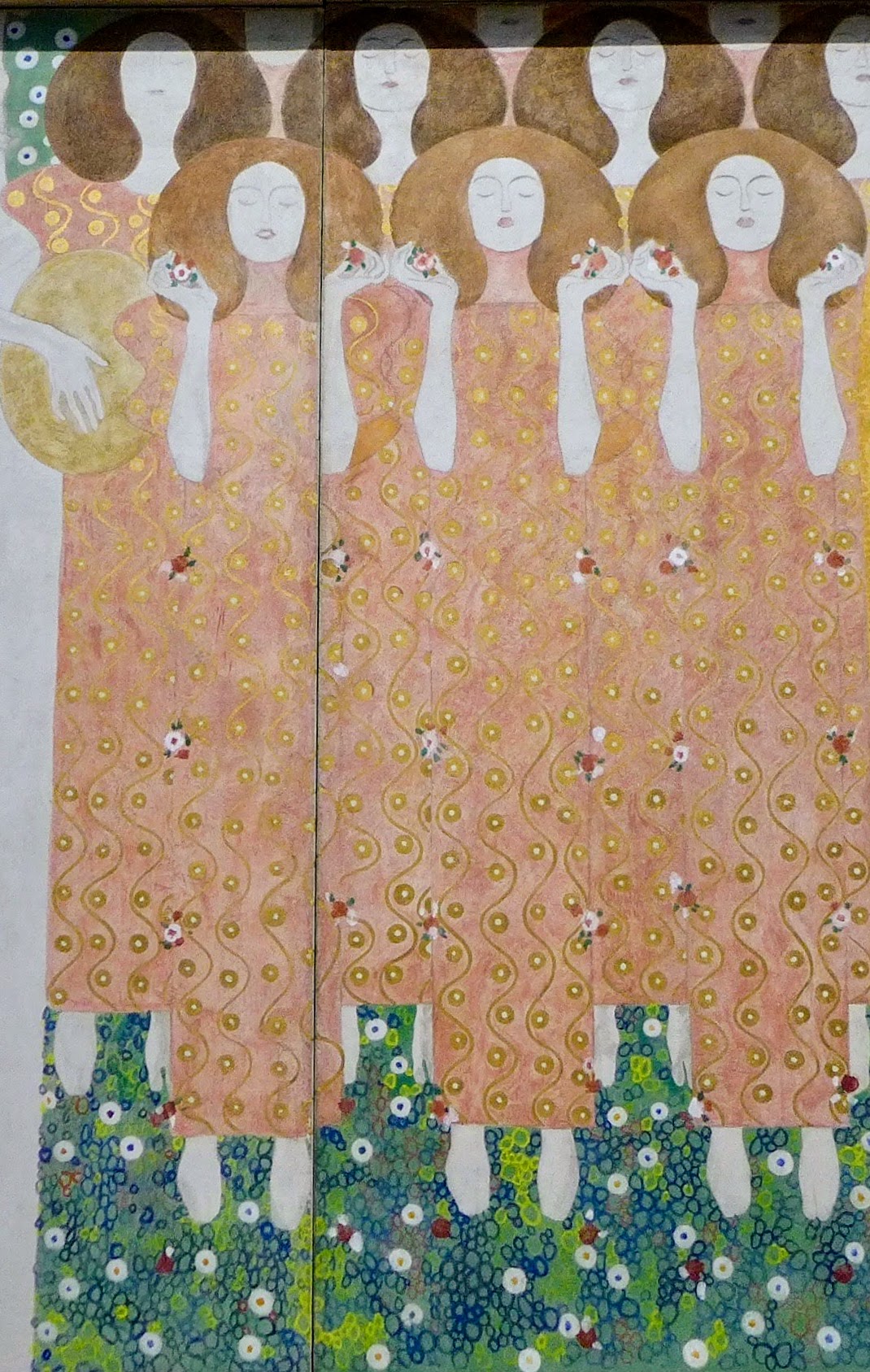 The Beethoven Frieze, 1902
The Beethoven Frieze, 1902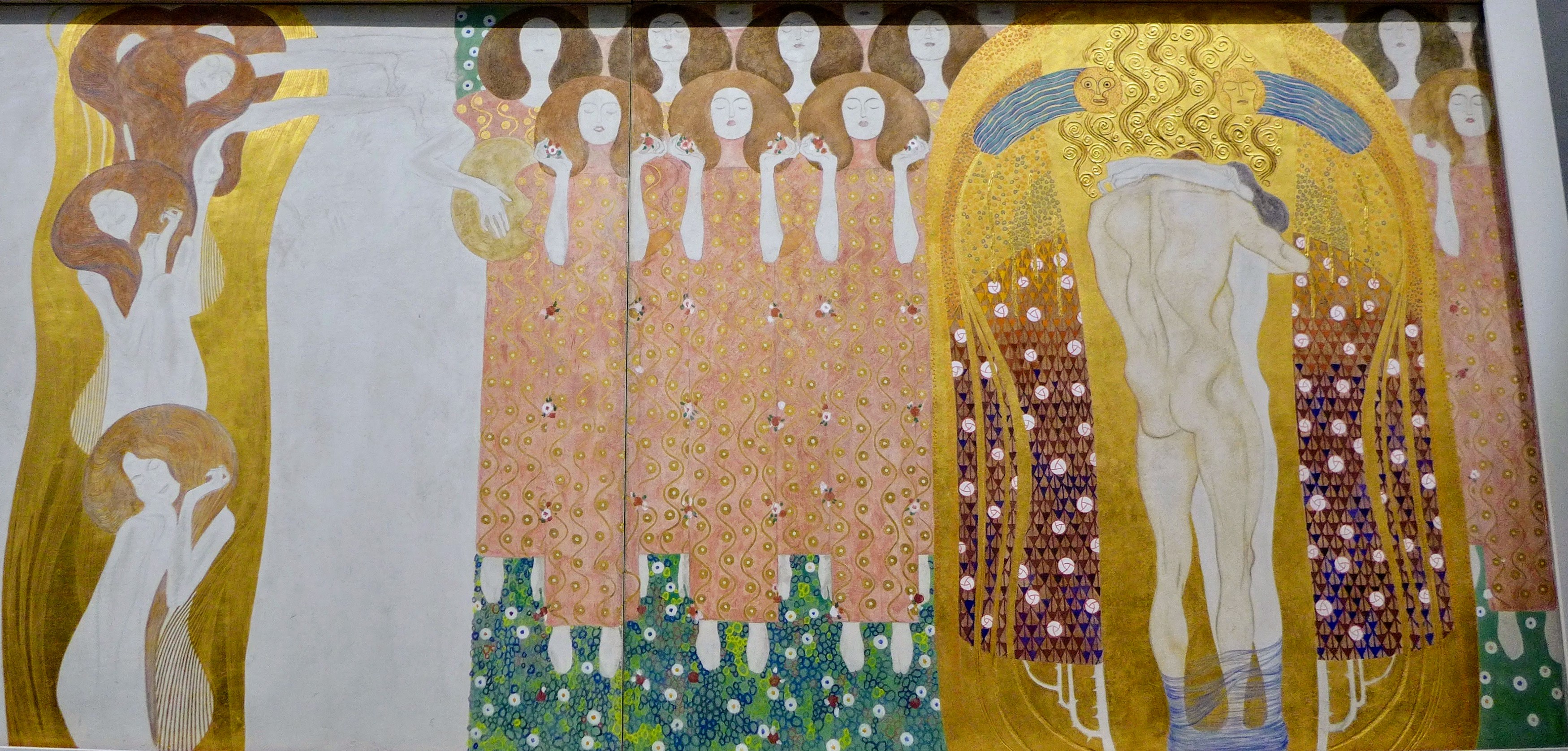 The Beethoven Frieze, 1902
The Beethoven Frieze, 1902 The Baby, 1917
The Baby, 1917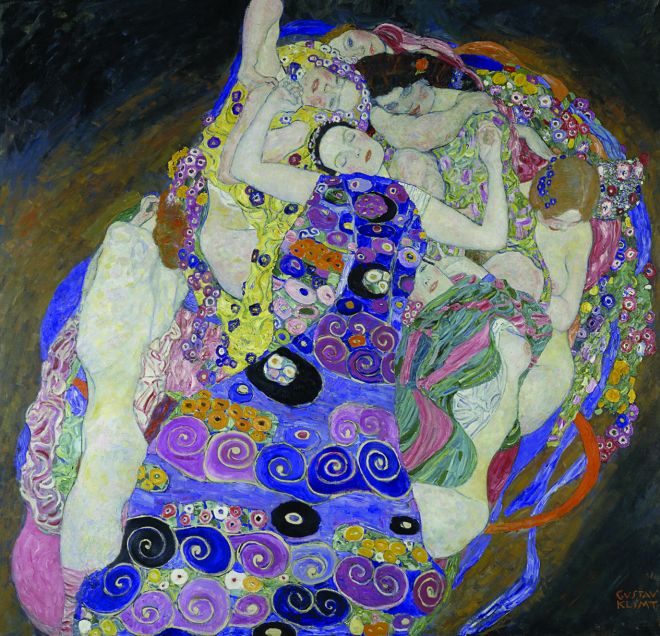 The Virgin, 1913
The Virgin, 1913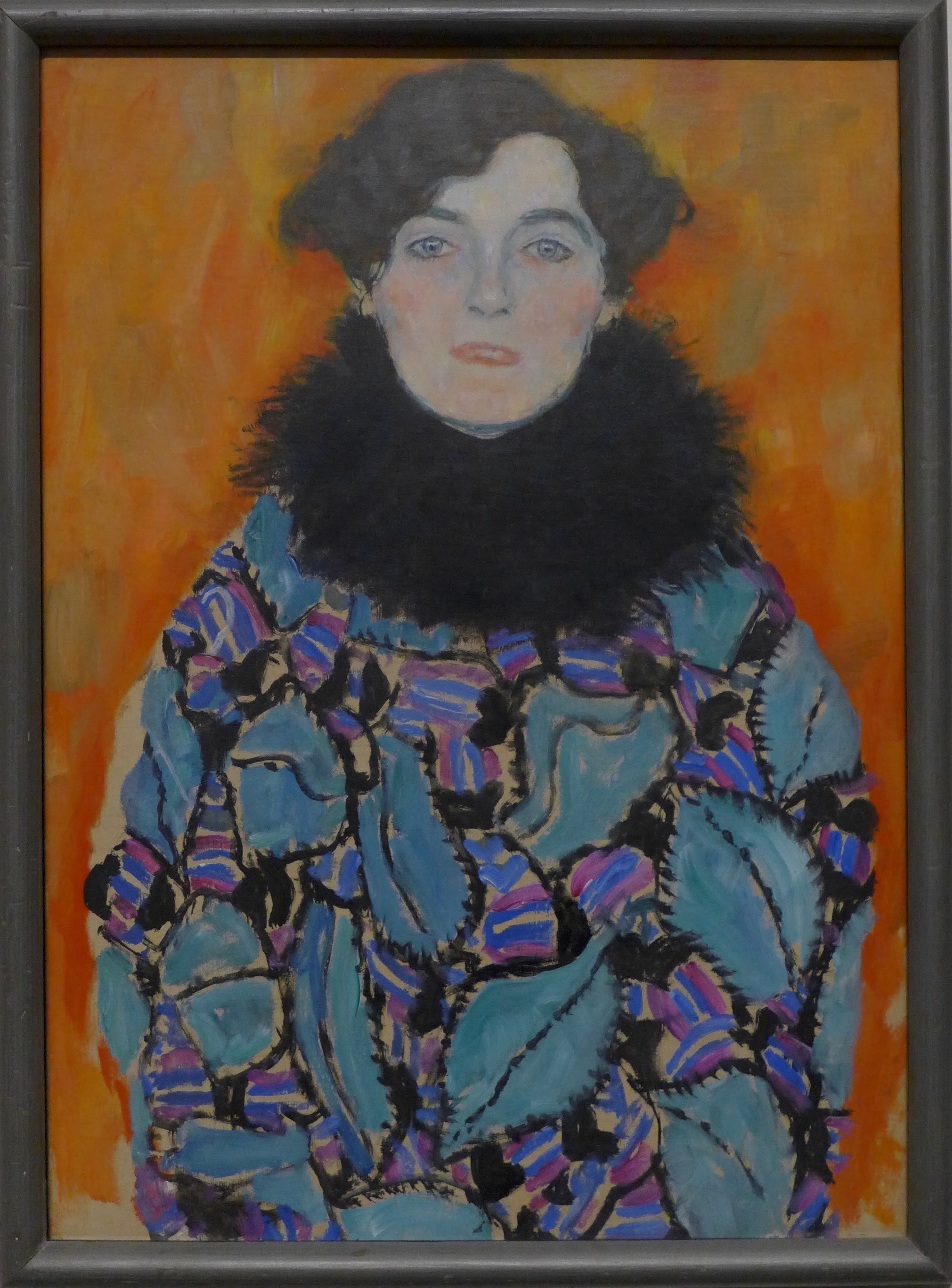 Portrait of Johanna Staude, 1917
Portrait of Johanna Staude, 1917 Portrait of Gertrud Loew, 1902
Portrait of Gertrud Loew, 1902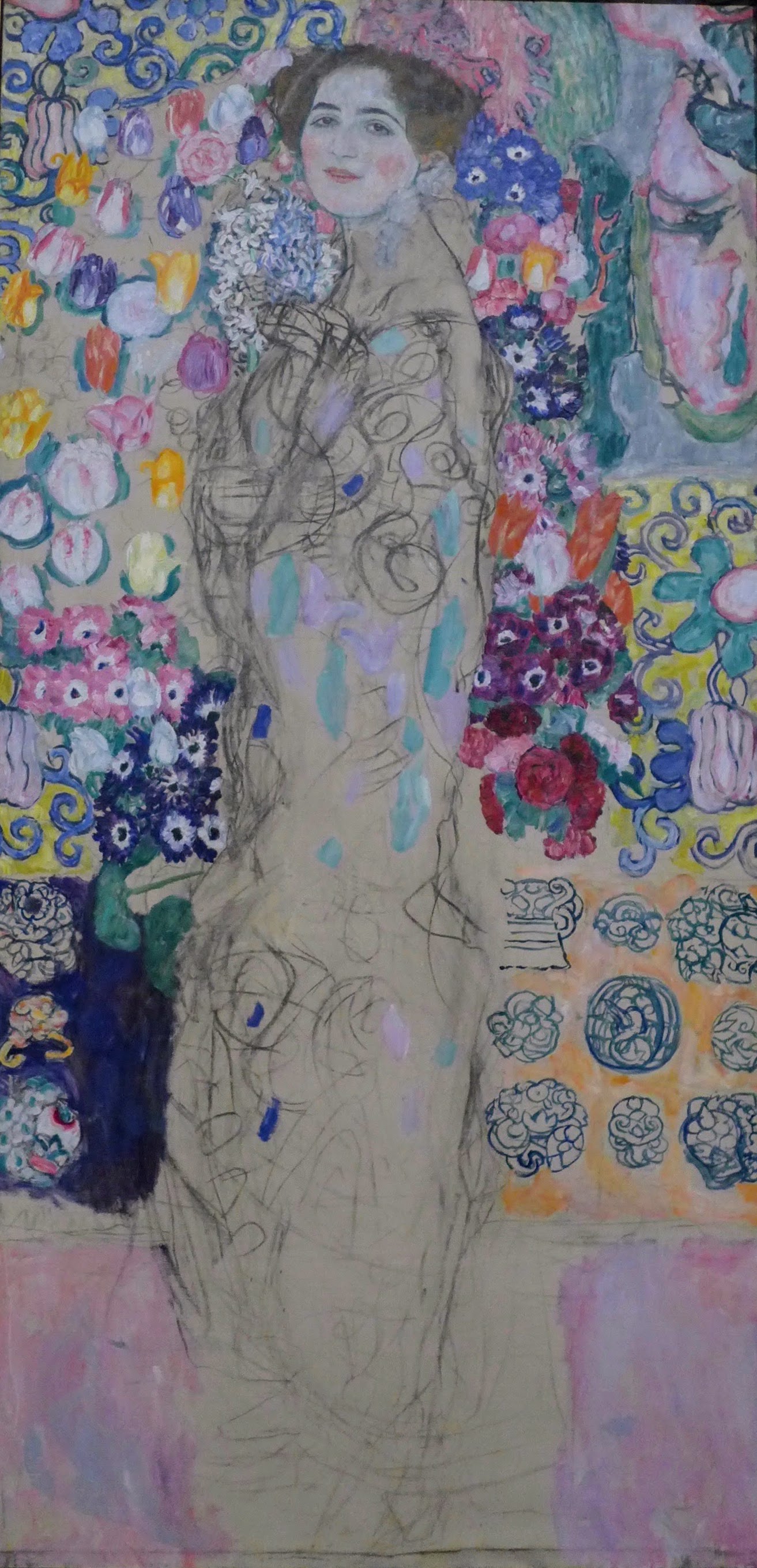 Portrait of Ria Munk III
Portrait of Ria Munk III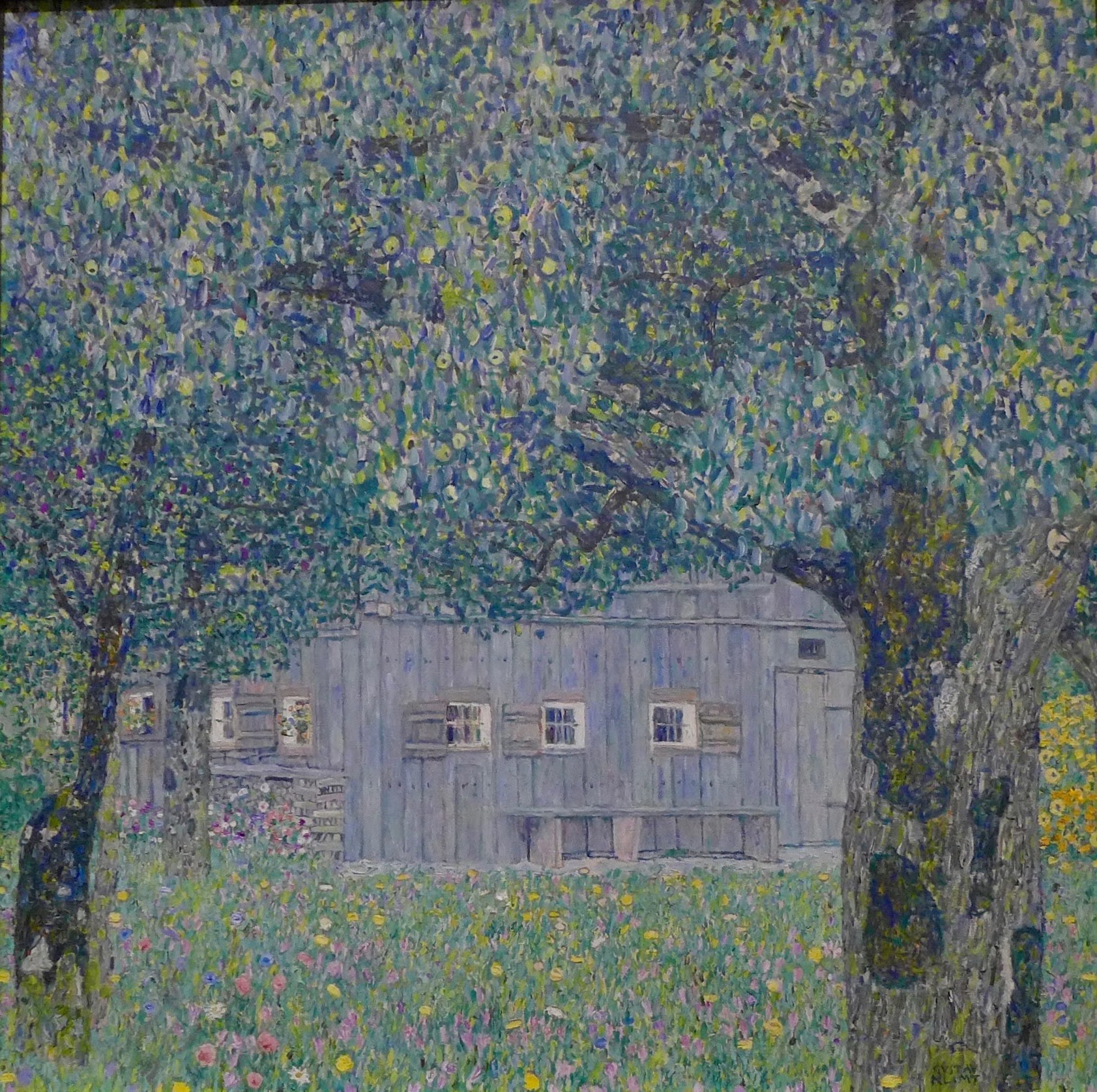 Farmhouse in Upper Austria, 1911
Farmhouse in Upper Austria, 1911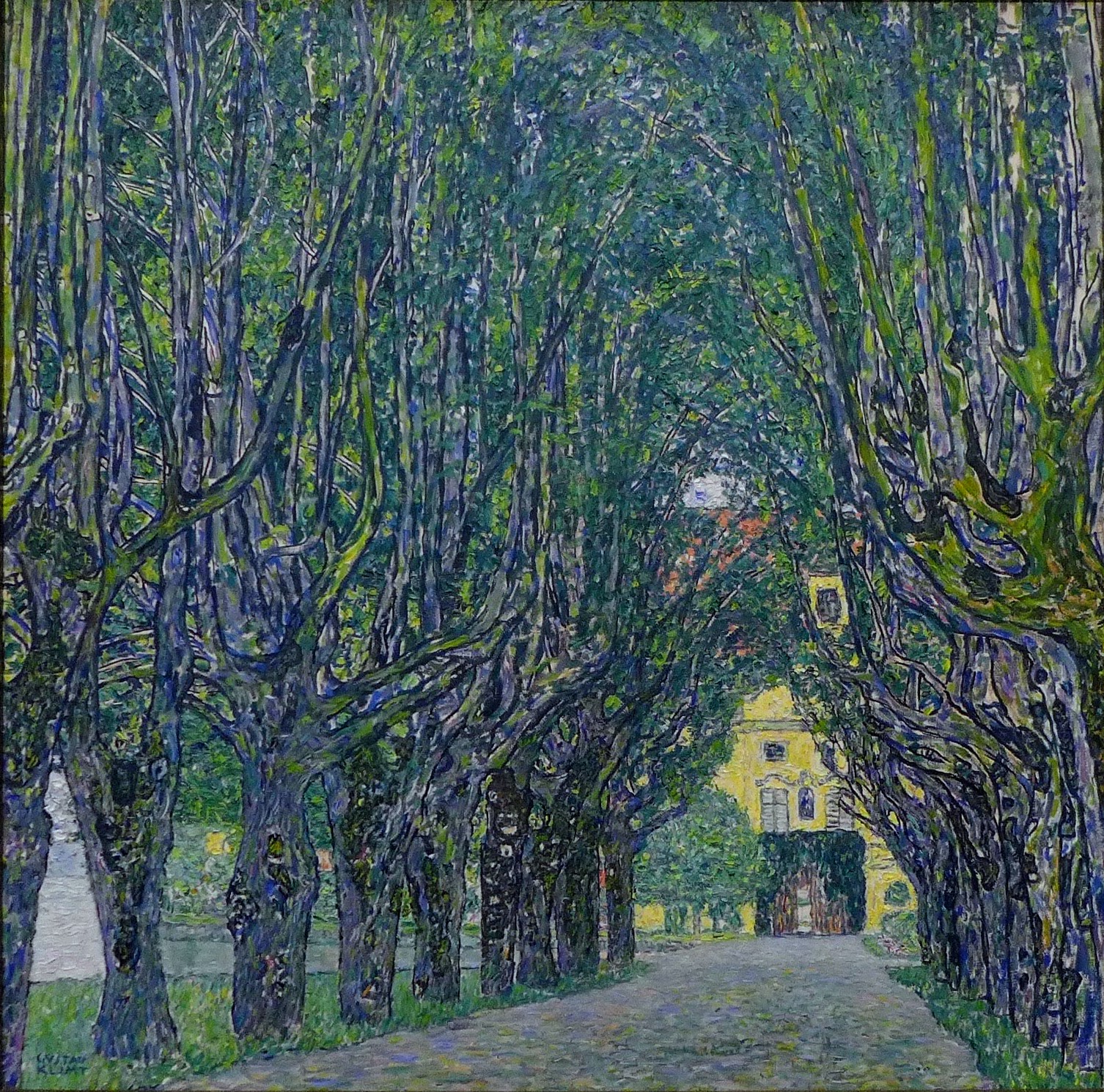 Allée at Schloss Kammer, 1912
Allée at Schloss Kammer, 1912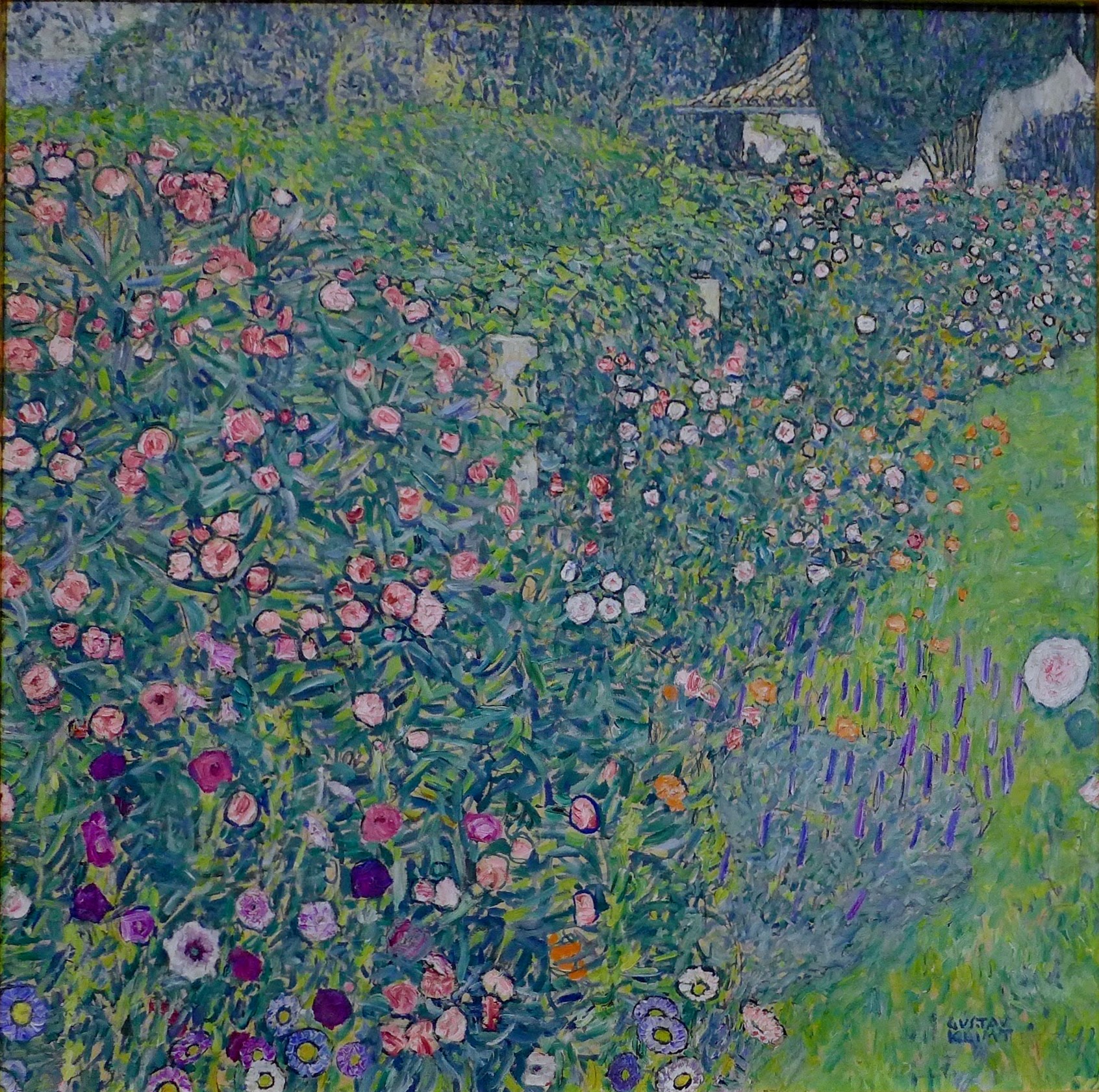 A Garden in Italy, 1913
A Garden in Italy, 1913
Bust portrait of a little girl from the front (Study for “Love”)
Klimt’s model for the girl in the foreground was an Italian Renaissance bust sculpted by Francesco Laurana (Kunsthistorisches Museum, Vienna).
With the portrait of Sonja Knips Klimt comes to a turning point in his oeuvre. It stands at the beginning to a series of portraits showing women of Viennese society.
The photo was taken at the time and is the only surviving picture of the painting.
Doctors versus artists: Gustav Klimt’s Medicine
Faculty Paintings Vienna University
University of Vienna Ceiling Paintings (Medicine)
Klimt’s contribution to the Beethoven Exhibition is considered one of his most defining works. His program included the Beethoven Frieze, a painting that ran across three walls of the exhibition hall.
Using spare graphic lines and ornamental surface treatments, Klimt explored the theme of humanity’s desire for happiness and hope for salvation.
The frieze culminates in a passionate embrace that was described in the exhibition catalogue as “This Kiss for the Entire World.”
Klimt here has adopted one of the principle of European modernism – the reversal of ostensibly “main” and “subsidiary” motifs – by removing the nominal protagonist to the composition’s upper edge.
This artwork has a special place in Klimt’s oeuvre as well as the National Gallery in Prague.
It is one of Klimt’s few small-scale portraits of a sitter whom we can identify by name.
Bildnis Gertrud Loew, painted in 1902, is an extraordinarily beautiful and captivating work from a crucial period in the artist’s career. Wreathed in diaphanous folds of gossamer fine white and lilac cloths, the sitter’s delicate features are composed into an expression of dreamy repose and gentleness, animated only by points of reflected light in her eyes. Klimt’s vertically inclined composition helps to enhance the figure’s somnambulant detachment by removing all extraneous details.
While still working on this third portrait of Ria, Klimt himself died. A beautiful example of his famous portrayals of women, this unfinished work gives fascinating insight into the artist’s process. Note the tentative placement of painted color patches amid rapidly sketched charcoal lines, the precisely outlined ornaments waiting to be filled in, and the fully developed flower pattern that envelops the upper part of the figure.
Upper Austria (Austro-Bavarian: Obaöstarreich) is one of the nine States of Austria|states or Bundesländer of Austria. Its capital is Linz.
This landscape signals the advent of a new phase in Klimt’s work during which he began to employ powerful spots of color.
Allee zum Schloss Kammer, 1912
Klimt spent the summer together with friends in Italy, on Lake Garda. The gardens of Albergho Morandi, a well known boarding-house opposite of Malcesine, are regarded as reference for the ‘Italian Garden’.
REFERENCES
- GUSTAV KLIMT FOUNDATION
- Gustav Klimt Museum
- KLIMT & RODIN: An Artistic Encounter
- The Vienna Secession
- The Wiener Werkstätte
TRAVEL: C I T I N E R A R I E S | VIENNA
- A Klimt Walk through Vienna
- Belvedere Museum Vienna – Gustav Klimt & Kiss
- Kunsthistorisches Museum, Vienna
- Museum of Applied Arts, Vienna
- National Gallery in Prague
- The Secession
VIDEOS

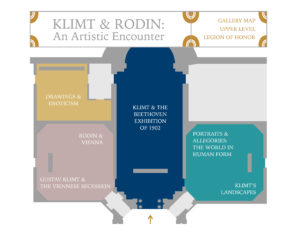
Pingback: A Klimt Valentine | TheKittyCats